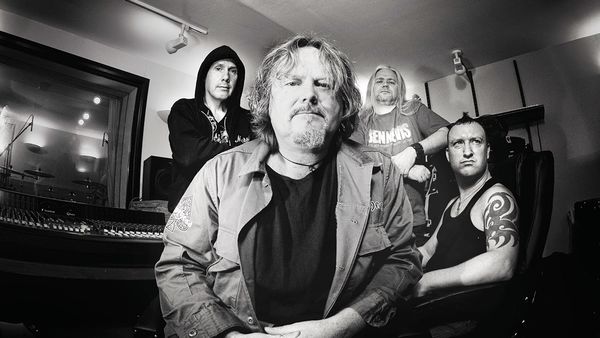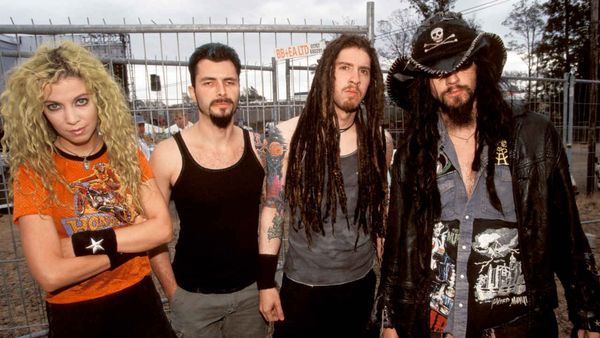Since a young age, Mark Anderson was drawing and telling jokes, therefore, it was only a matter of time before he became an acknowledged cartoonist.
Mark's one-panel comics range from Cupid jokes to business gags to music ones that fit perfectly, as he graduated from the University of Northern Iowa with a music degree. What started as a personal passion has now blossomed into his full-fledged career. Additionally, the artist is a member of the National Cartoonists Society and has been a featured speaker at their annual Reuben Awards.
So, without further ado, we invite you to explore his witty humor, and for more information, read the interview with Mark below.
More info: andertoons.com | Instagram | twitter.com | Facebook
#1
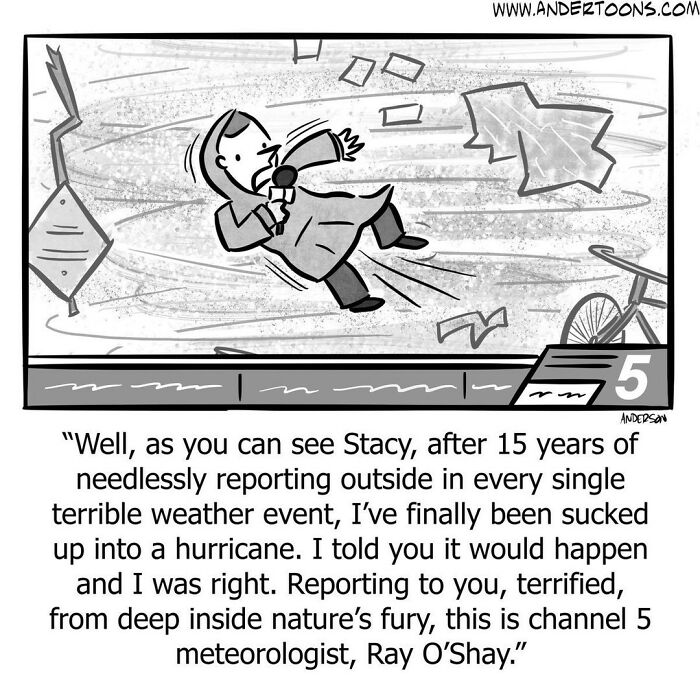
Image credits: andertoons
First of all, Mark shared a bit more about himself: “I’m a full-time cartoonist based in the Chicago area. I’m married with two kids, two cats, and a house full of LEGO. I went to school for music, worked on cruise ships for a while playing piano and trombone, finished up my degree, worked selling fasteners, metal coil, and advertising, and then tried my hand at cartooning. You know, your standard path to a career in cartoons.”
#2
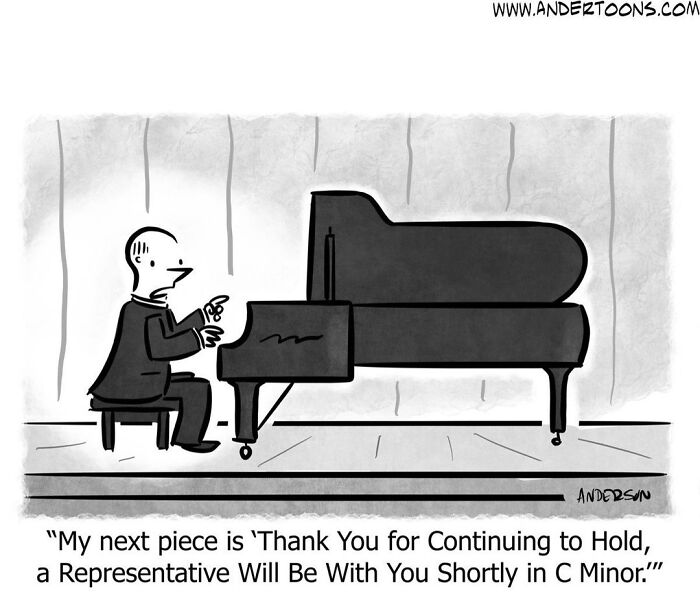
Image credits: andertoons
#3
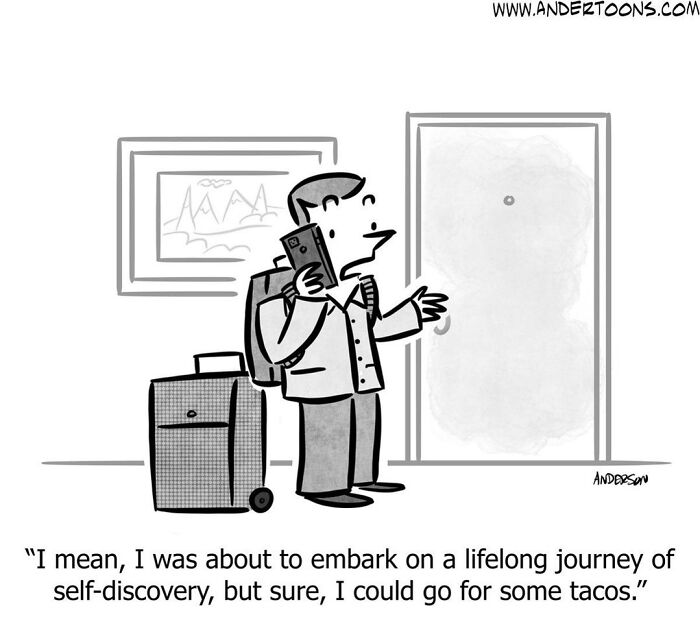
Image credits: andertoons
We wanted to learn more about the theme in the comics, therefore, we asked Mark to describe the essence behind Andertoons. He replied: “Oh boy, that’s a tough one. I feel weird describing what makes me different or interesting or special (I think it’s the midwesterner in me), so here are the cartoonists that influenced me the most: Peter Arno, Charles Addams, Chon Day, Sidney Harris, Ed Emberly, Henry Martin, Mischa Richter, Lee Lorenz, Charles Schulz, Bill Watterson, Gary Larson, Darwyn Cooke, and Richard Thompson. Check them out and you’ll have a good idea of the ingredients that make up whatever style and/or slant I have.”
#4
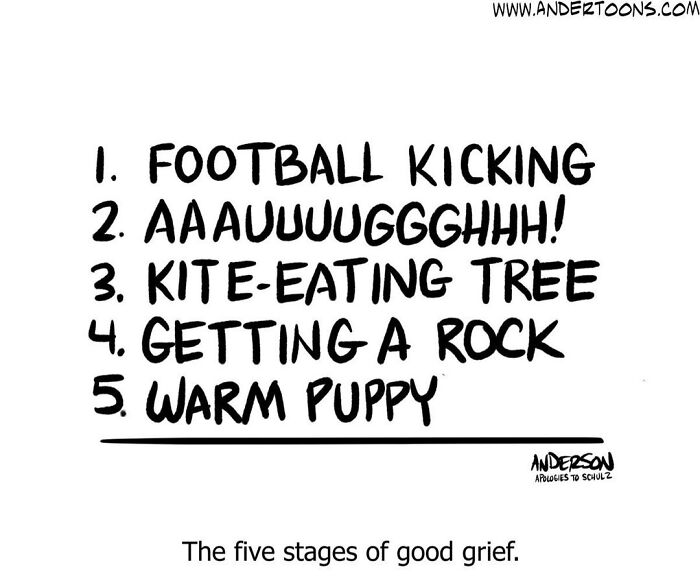
Image credits: andertoons
#5
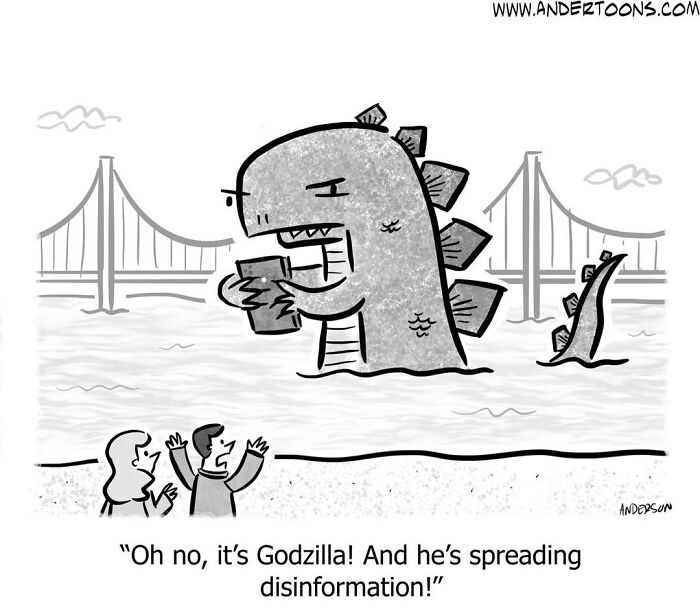
Image credits: andertoons
In order to understand the artist more, we were curious to learn about Mark’s creative process. He shared how he finds his inspiration: “When I’m writing cartoons I’m reading a lot - mostly magazines. And it’s not about what I find interesting, it's reading just about anything and waiting for something to pop out at me. A word, a phrase, an idea… And when it does I kind of stare off into space for a while and turn it over in my head. Can I reverse it? Can I exaggerate it? Can I point something out? It’s not that organized but that’s kind of what it’s like. Then I write down my idea and go back to reading.
I do that until I reach whatever number of cartoons I need to do and then I leave it to sit for a few days. If after a few days, I still find them funny, then it’s onto the art.
The art is frankly the easy part. (That’s not to say I’m a great artist, but after more than 25 years I have a few tricks up my pen.) Mostly I worry about clarity and understandability. You’ve got about 5-7 seconds for the reader to understand the scene, find who’s talking, and get the joke. So clarity is key.”
#6
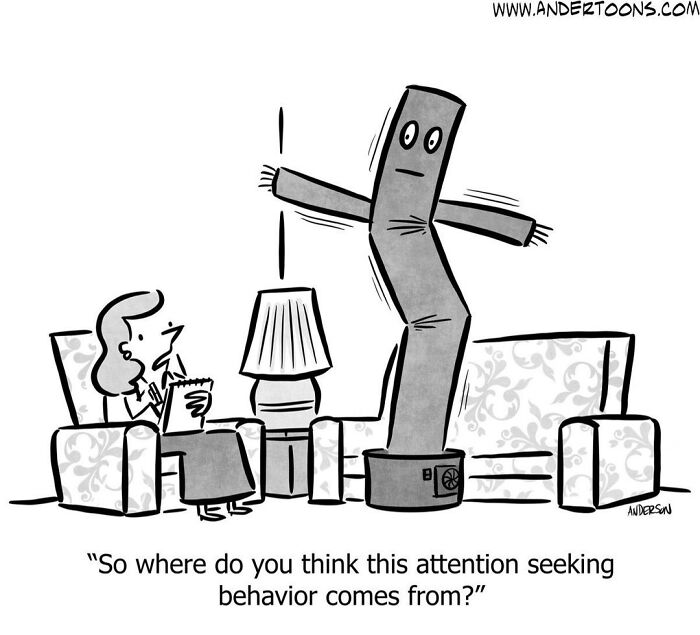
Image credits: andertoons
#7
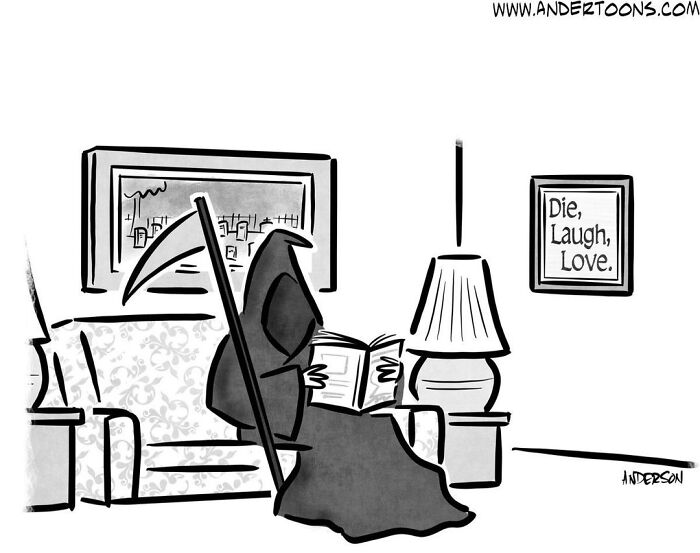
Image credits: andertoons
A big part of Mark’s life was also music. We asked the artist to share his journey from a career in music to becoming a full-time cartoonist.“I always knew I wanted to do one of two things, be a musician or a cartoonist. (My high school guidance counselor was horrified.) I went to school for music, played semi-professionally for a while, and then got married.
The thing is when you’re newly married and working a day job, trying to gig at night is not a great way to go. So I stopped music and decided I’d give cartooning a try. It was a creative outlet I could do at home and work, and it was quiet and didn’t disturb the neighbors.
I started selling cartoons to magazines within about three or four months and landed my first big one, Reader’s Digest, after about 6 months. My editors were very kind and gave me a lot of good advice. One thing I’ll always remember is one editor encouraging me saying 'your art’s not great, but you’re a good writer. And good writing will carry bad art.' He was right.
After a few years, I’d built up a small client base and thought I could probably make this work as a career. So I quit my job and started cartooning full-time. Well, not exactly full-time, my wife was pregnant at the time and we agreed that I’d quit my job, be a stay-at-home dad, and try to make a go at cartooning. Looking back it seems crazy, but it worked out.”
#8
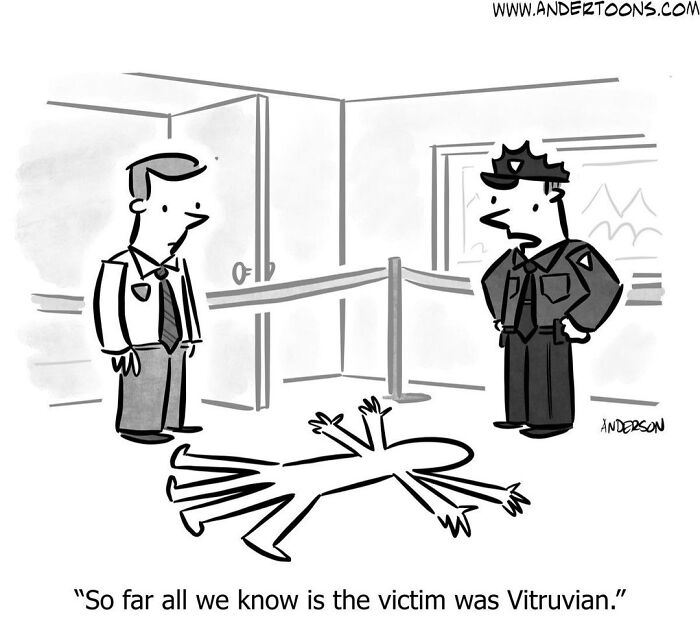
Image credits: andertoons
#9
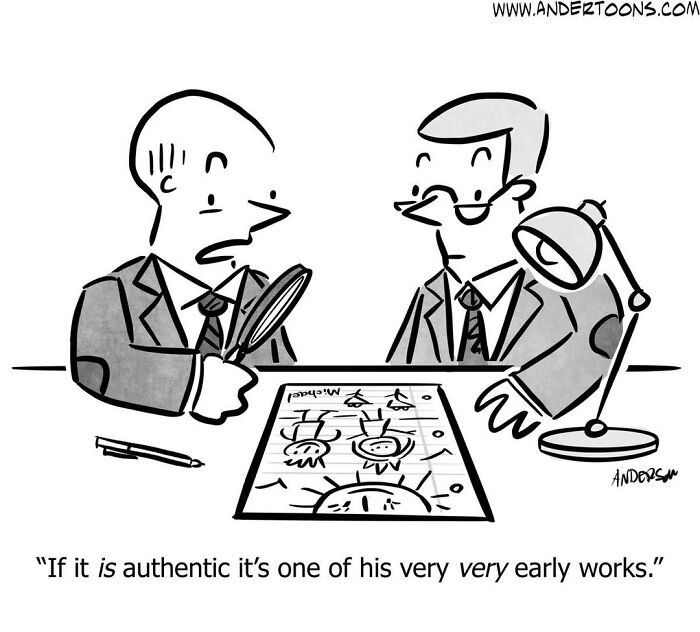
Image credits: andertoons
Mark’s work has been featured in various prestigious events and institutions. The artist also shared other highlights of his cartoonist career.
“I’ve both worked hard and been incredibly fortunate. I’ve been in most of the big magazines except for Playboy and the New Yorker. Some of the organizations I’m proudest to have sold to include Amazon, GE, GM, NASA, and National Geographic. I have one cartoon in the Smithsonian Museum of American History. I got to see it in person a few years back and it was a deeply weird moment.
I do a lot of teaching now at schools and libraries. I teach kids how to draw dinosaurs, robots, sharks, monsters… It’s super fun and silly and I hope that I’m sort of sharing my love of cartoons with kids who might not get a lot of that anymore.
As for the future, I’d still like to self-publish a collection of my work before I retire. I wouldn’t mind doing a kids' book. And hey, New Yorker, if you’d like to publish just one cartoon, it’d be nice to say I was a New Yorker cartoonist. But mostly I’m fairly content with my place in cartooning.”
#10
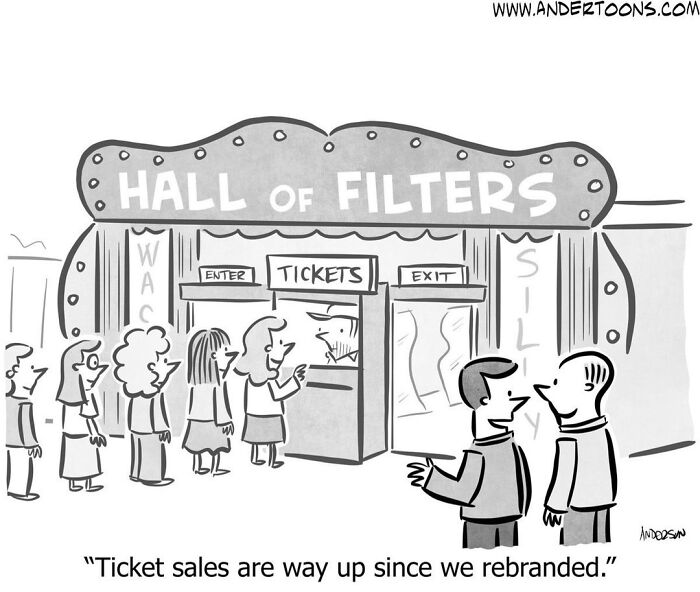
Image credits: andertoons
#11
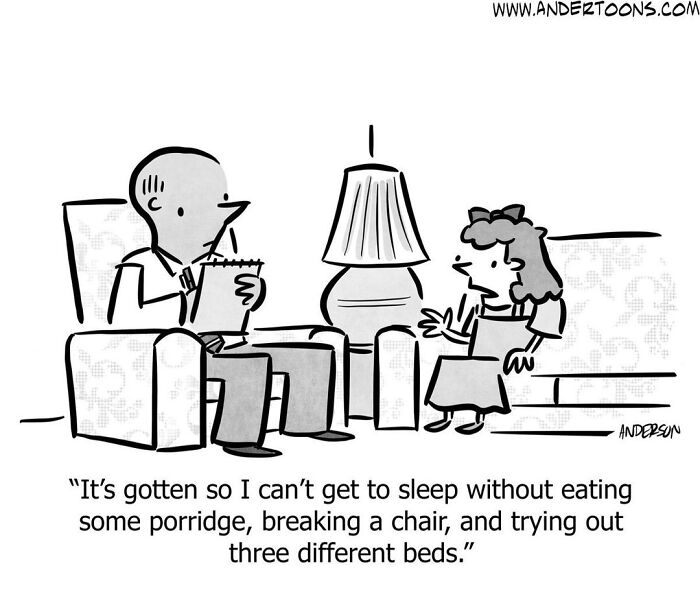
Image credits: andertoons
And lastly, Mark added: “I’m a big fan of willful naïveté. I’ve always assumed I could do stuff. Music, stay-at-home dad, cartooning, etc… It’s not a confidence thing, I just never saw a reason why not. I guess you could say that’s silly, or ignorant, or dangerous, but it never occurred to me that things wouldn’t work out. So give some willful naïveté a try.
Also, don’t take things so seriously. And go draw something. Be happy.”
#12
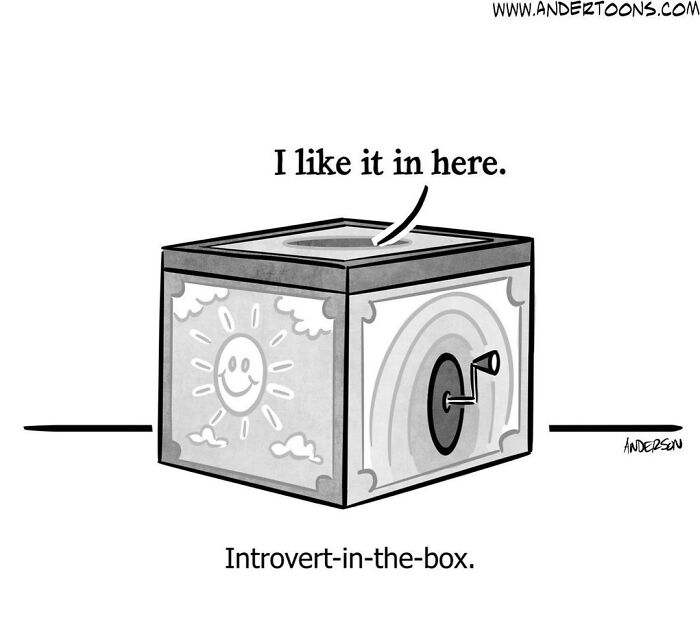
Image credits: andertoons
#13
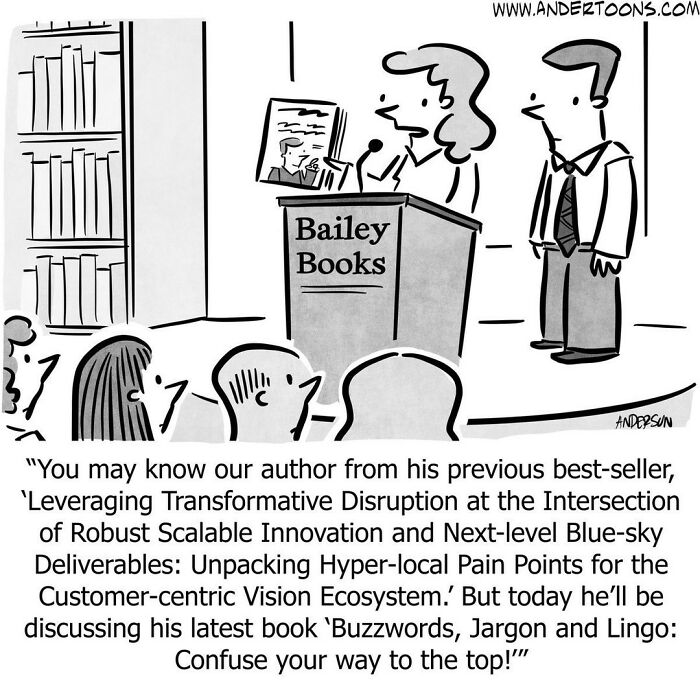
Image credits: andertoons
#14
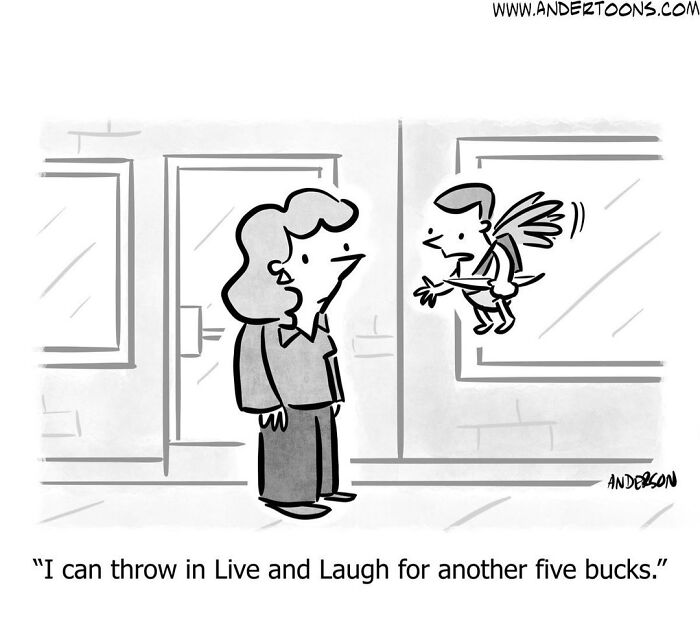
Image credits: andertoons
#15
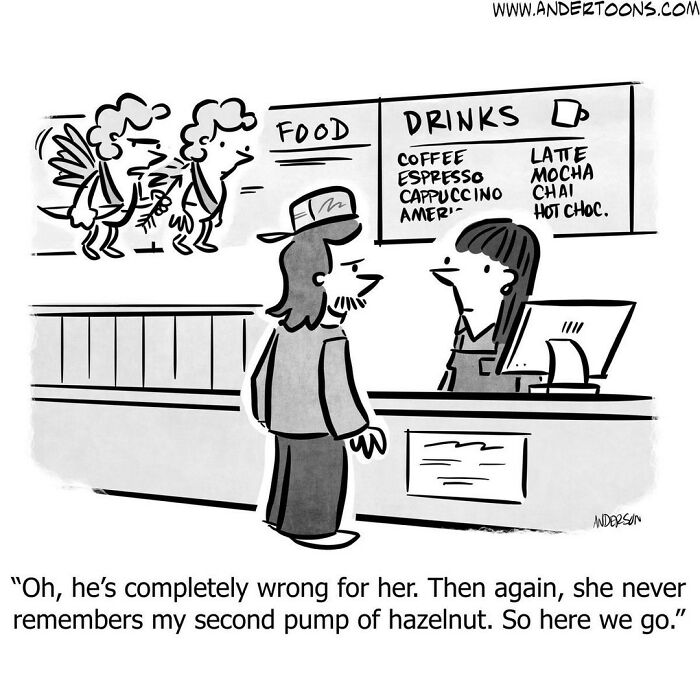
Image credits: andertoons
#16
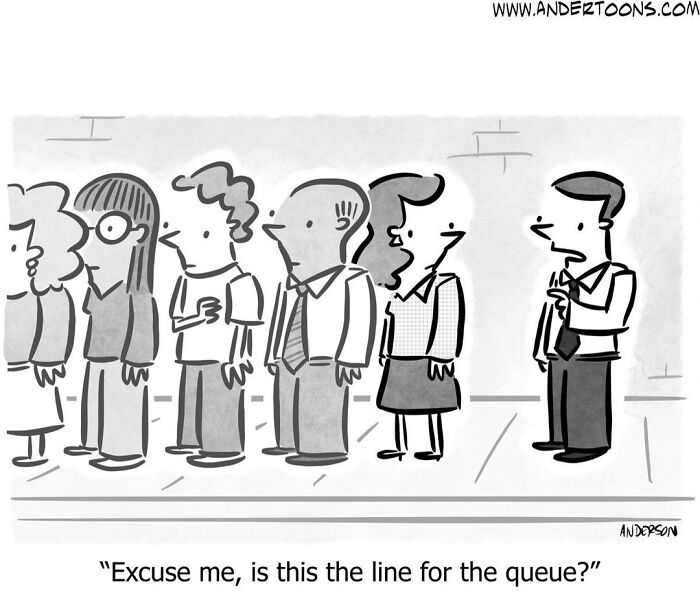
Image credits: andertoons
#17
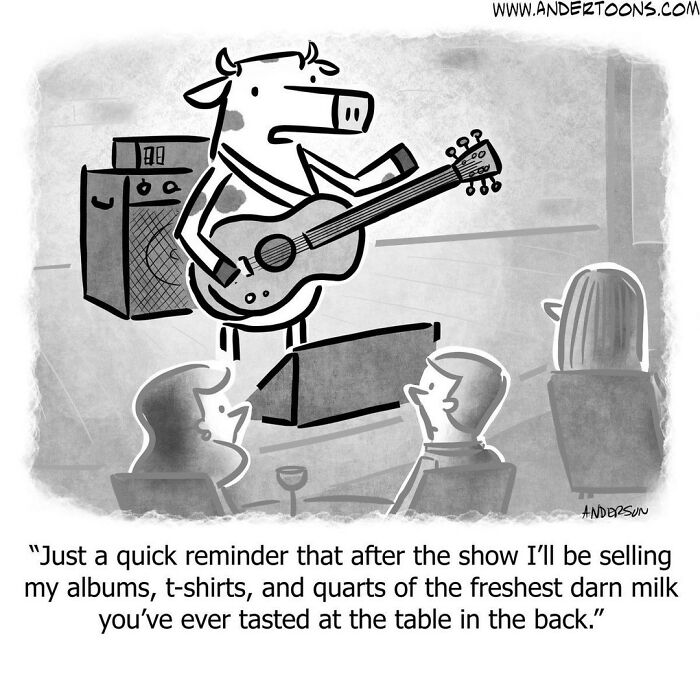
Image credits: andertoons
#18
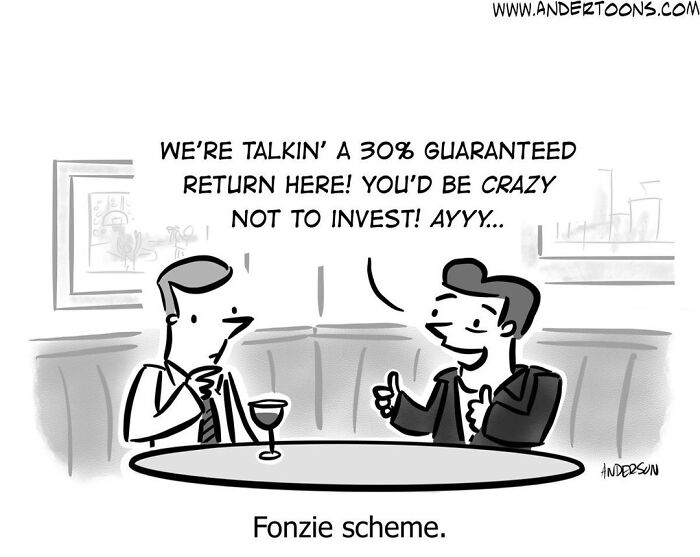
Image credits: andertoons
#19
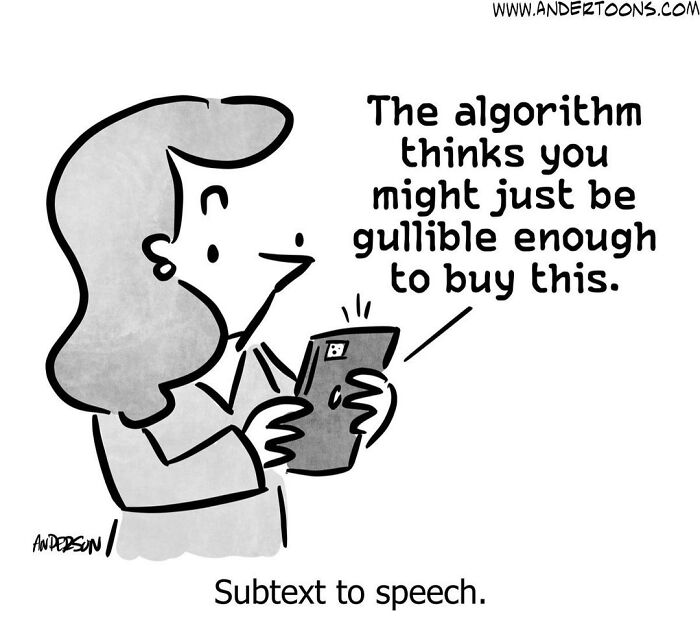
Image credits: andertoons
#20
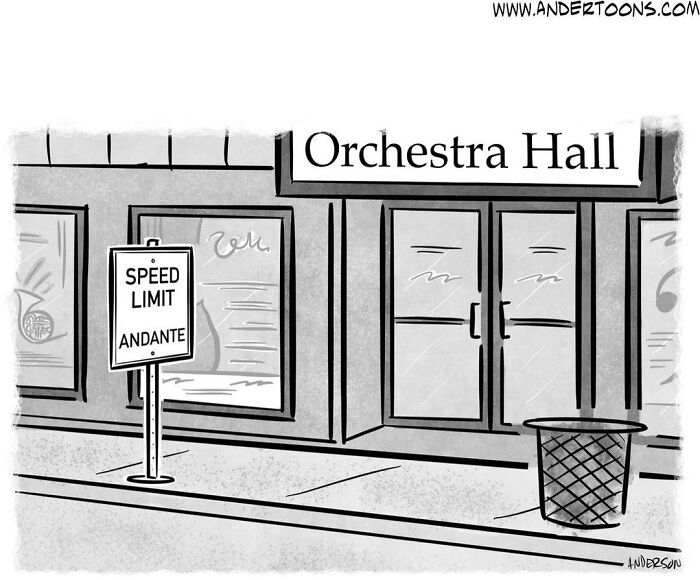
Image credits: andertoons
#21
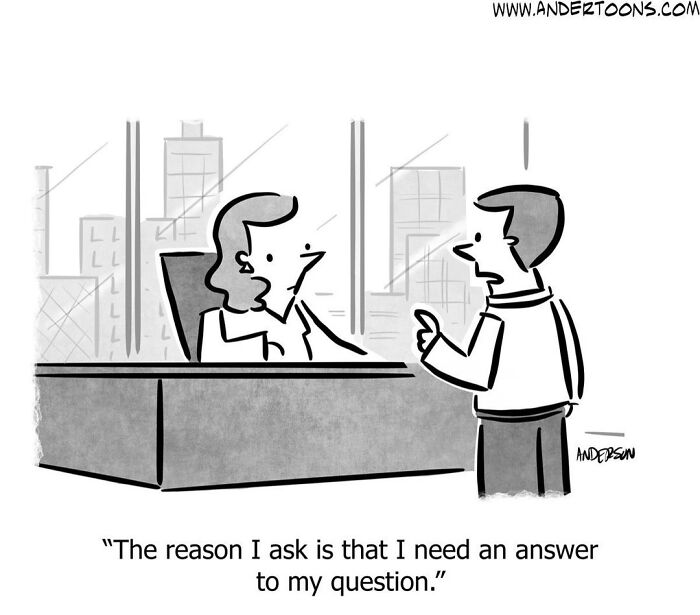
Image credits: andertoons
#22
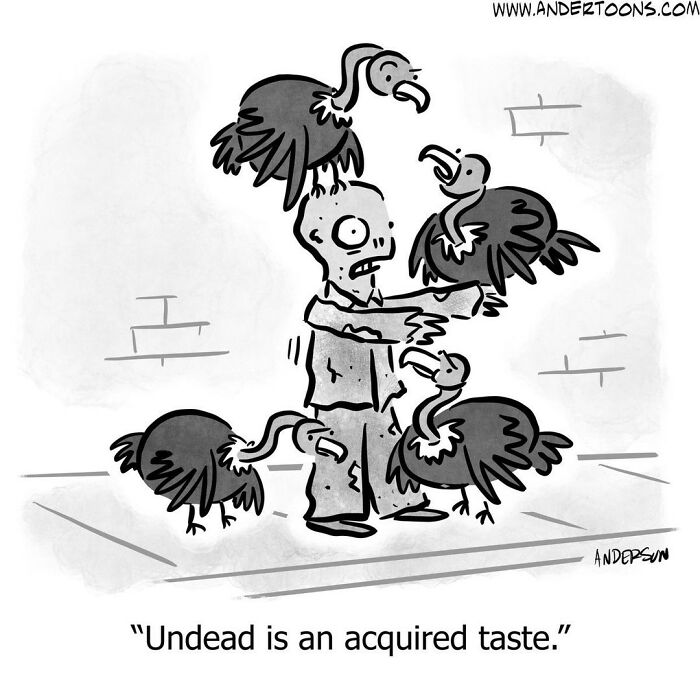
Image credits: andertoons
#23
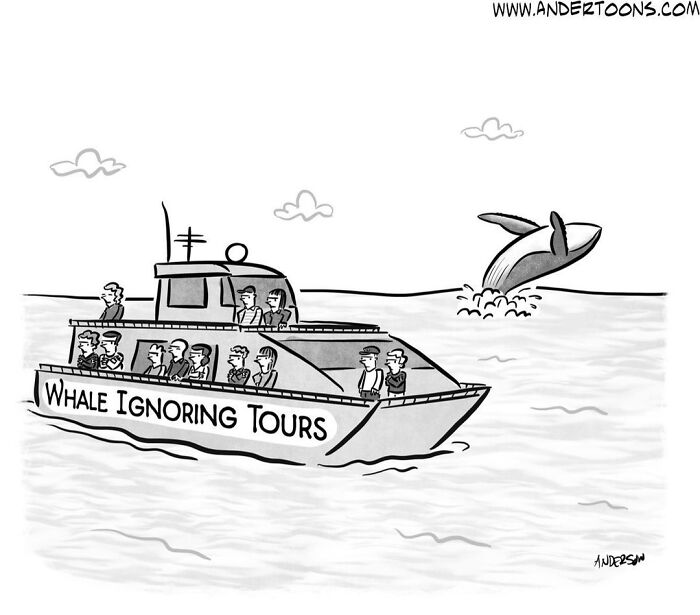
Image credits: andertoons
#24
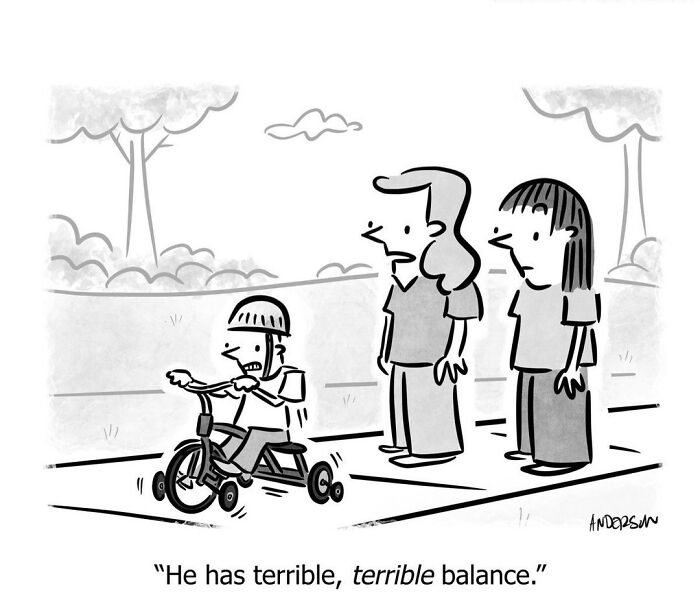
Image credits: andertoons
#25
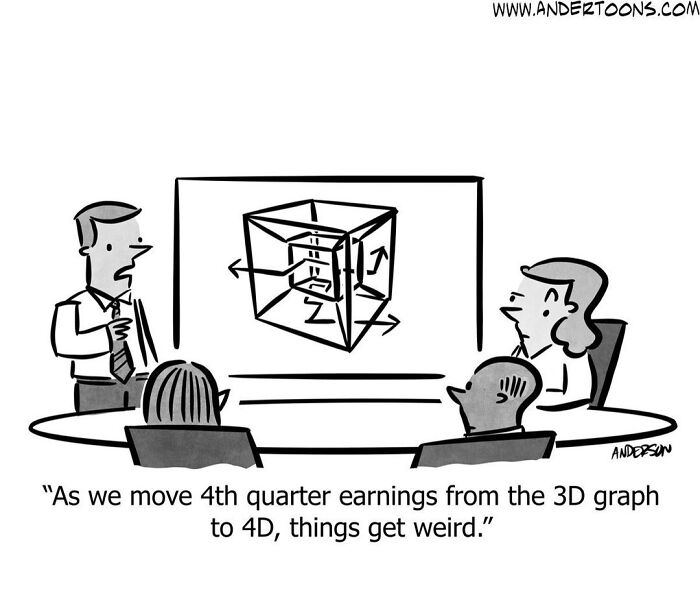
Image credits: andertoons
#26
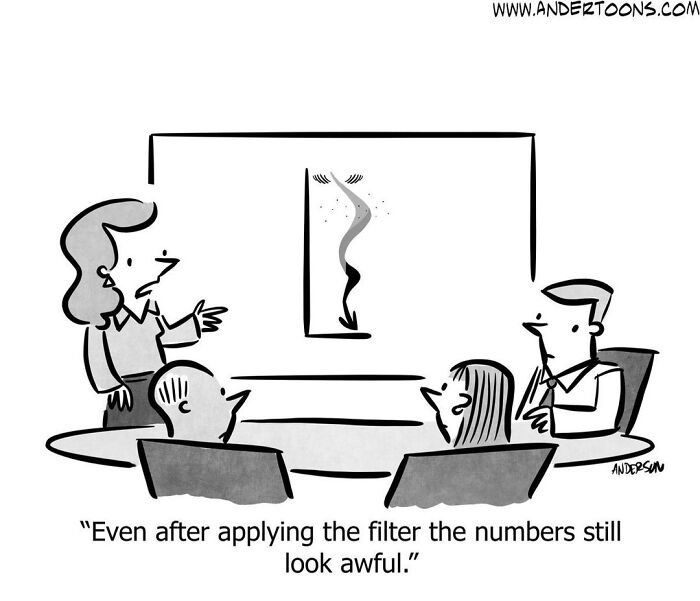
Image credits: andertoons
#27
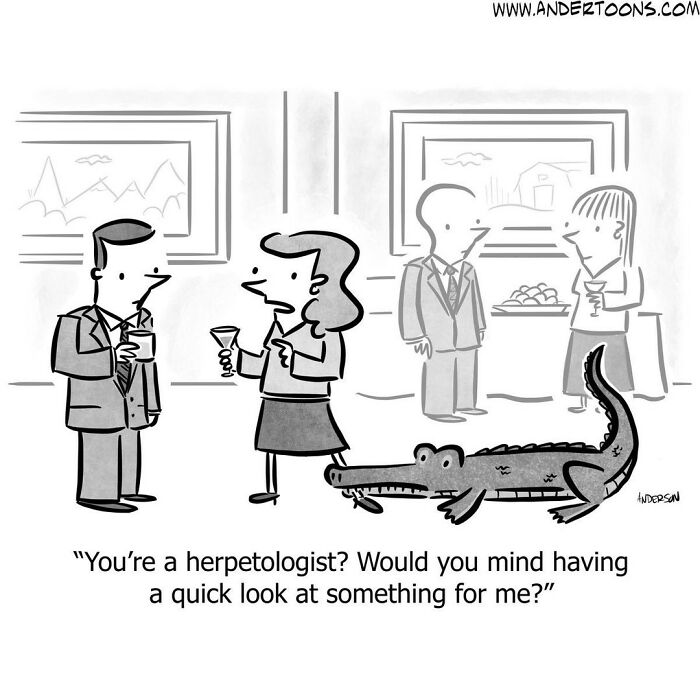
Image credits: andertoons
#28
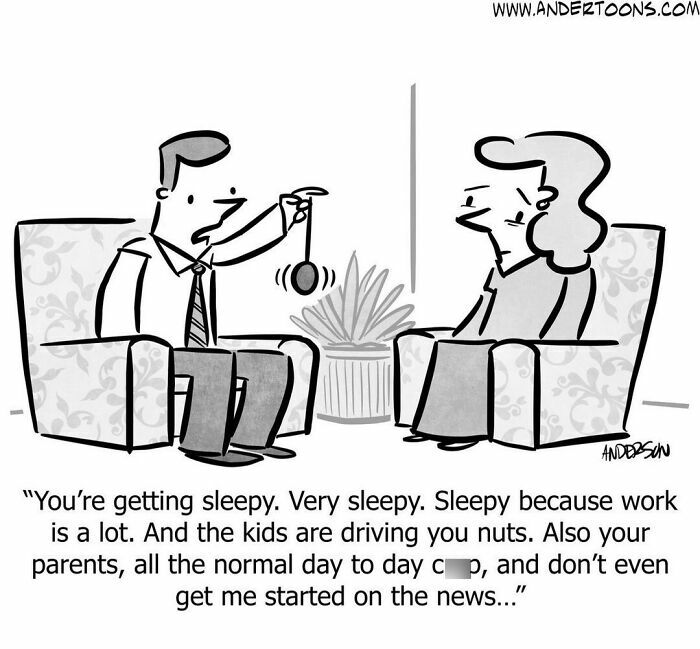
Image credits: andertoons
#29
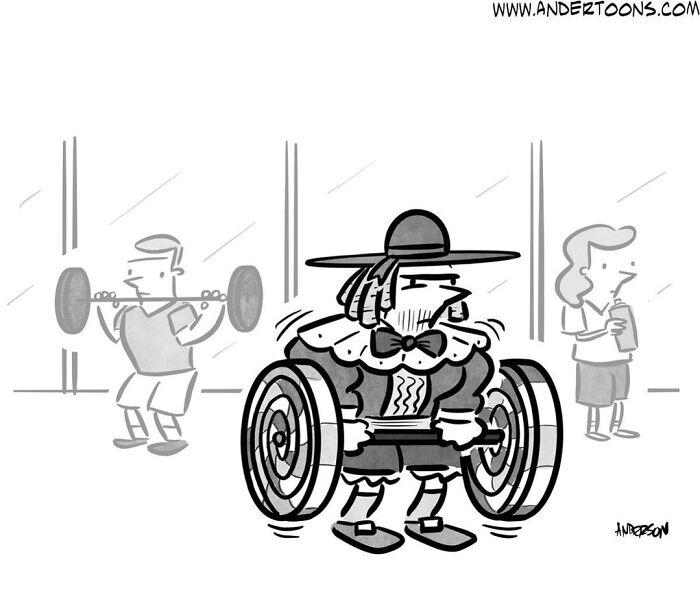
Image credits: andertoons
#30
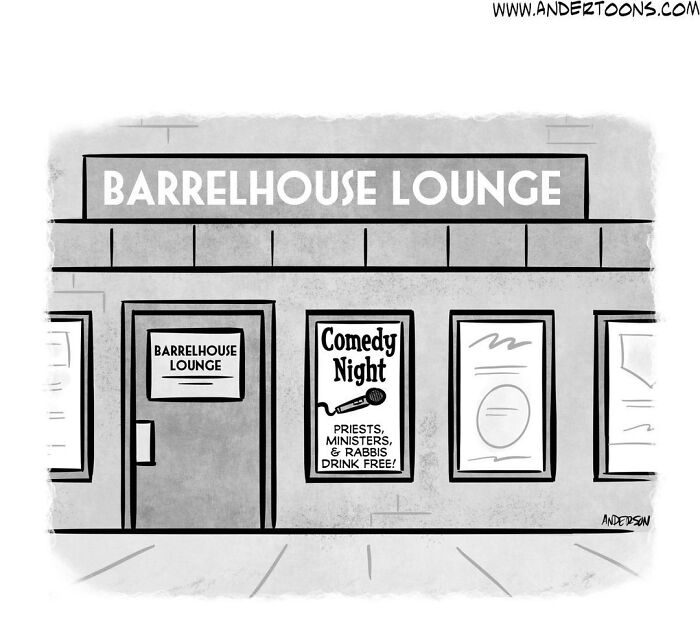
Image credits: andertoons
#31
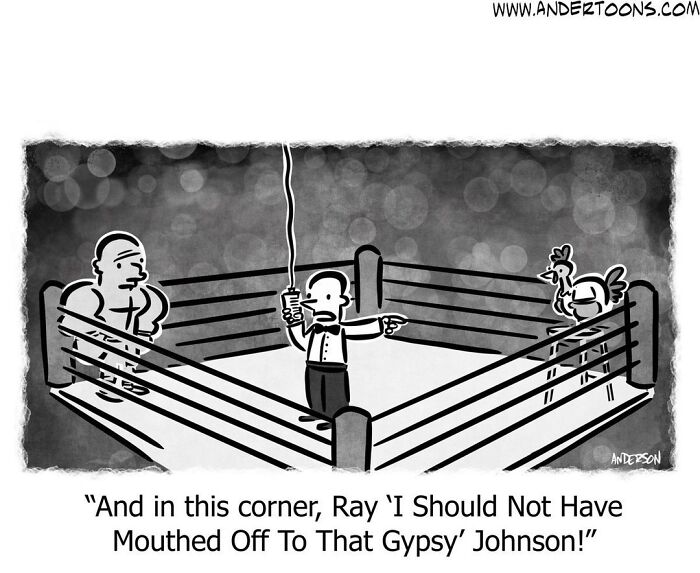
Image credits: andertoons
#32
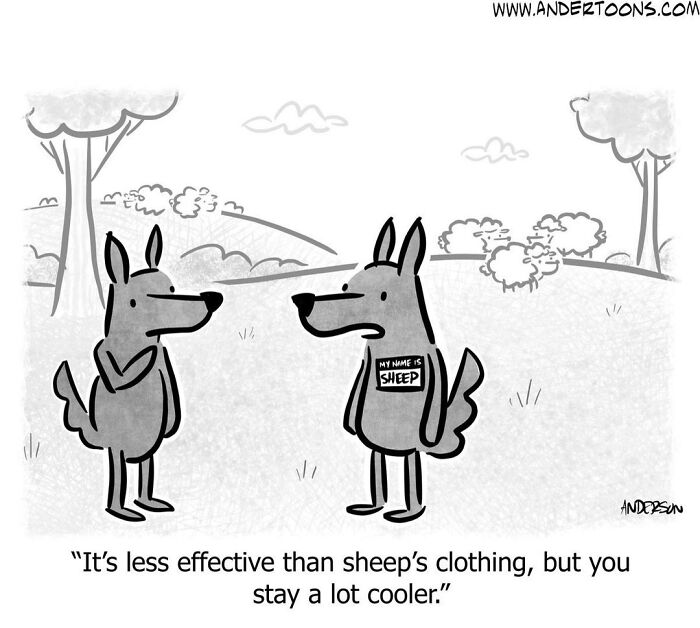
Image credits: andertoons
#33
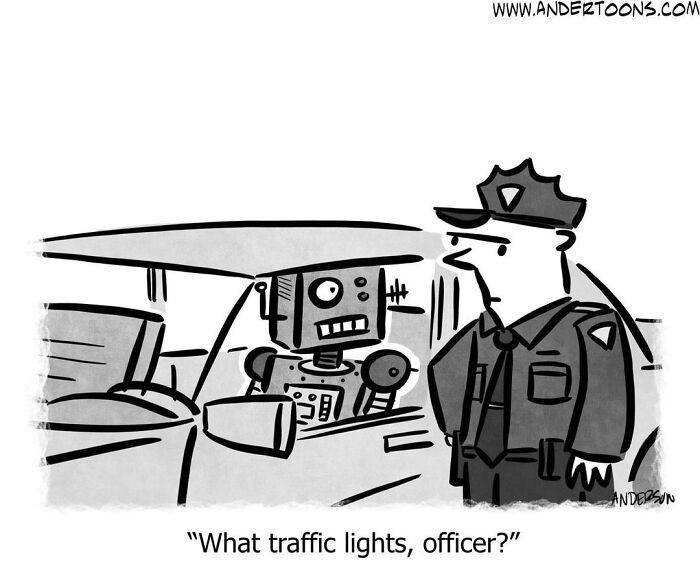
Image credits: andertoons
#34
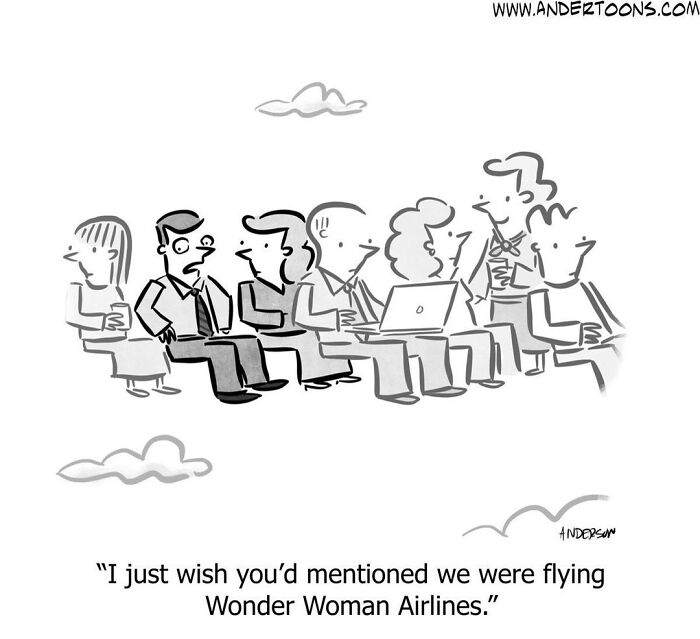
Image credits: andertoons
#35
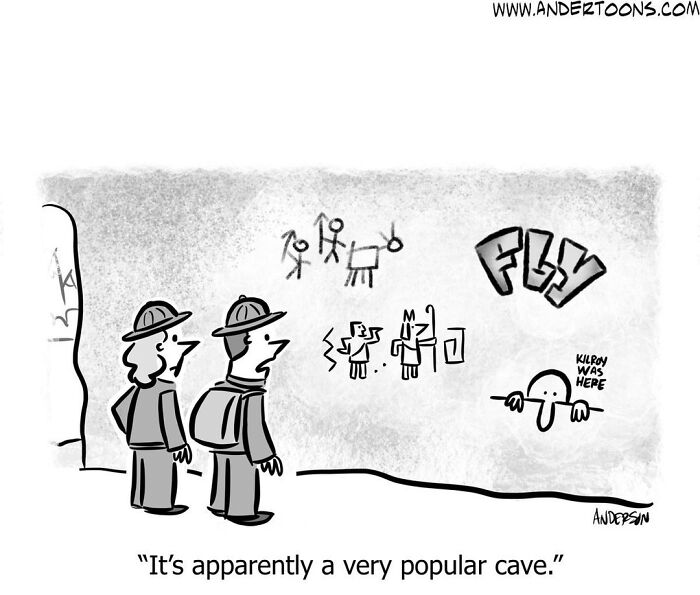
Image credits: andertoons
#36
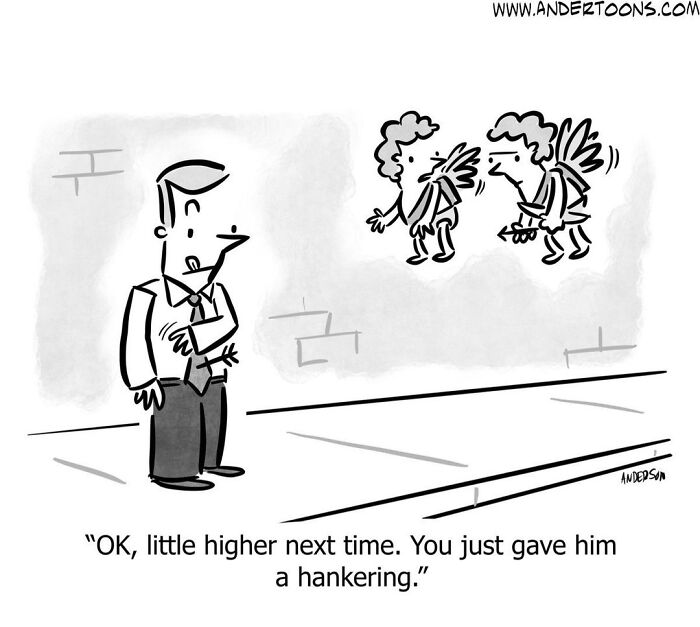
Image credits: andertoons
#37
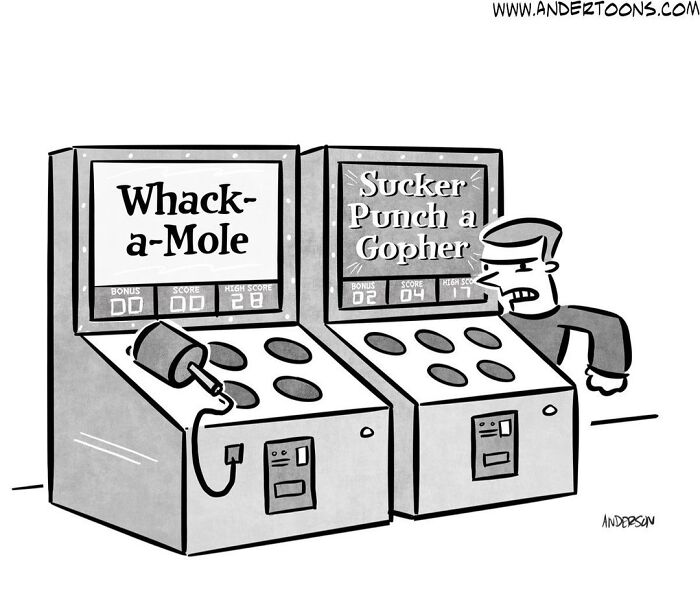
Image credits: andertoons
#38
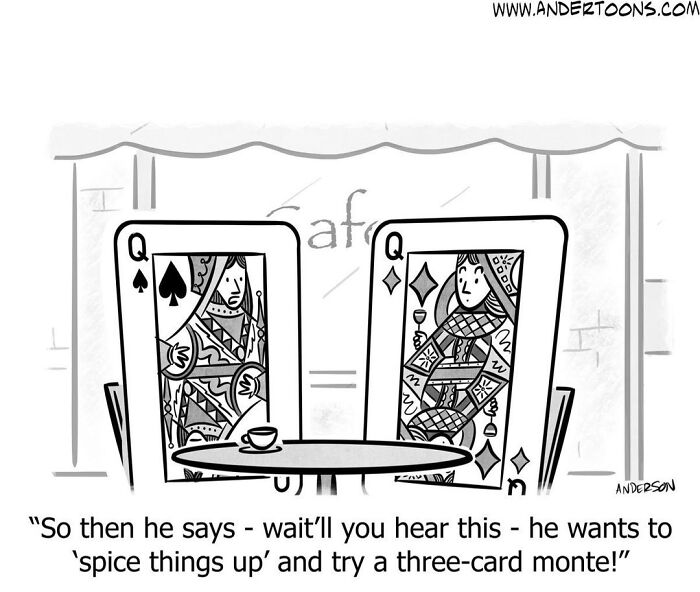
Image credits: andertoons
#39
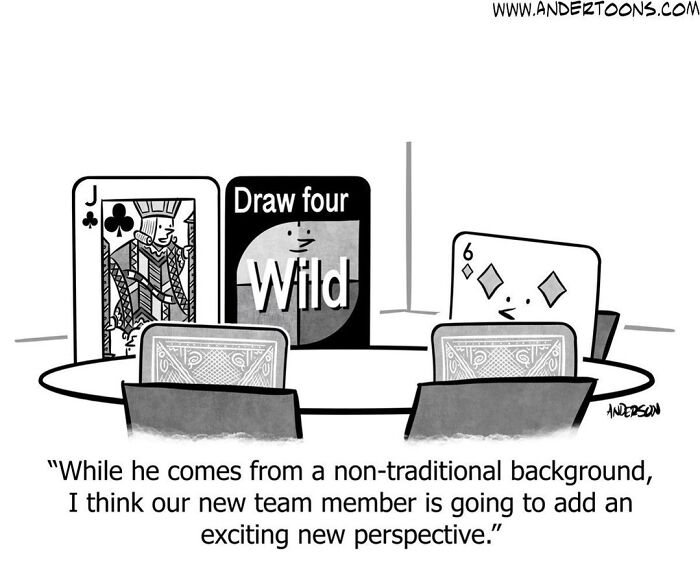
Image credits: andertoons
#40
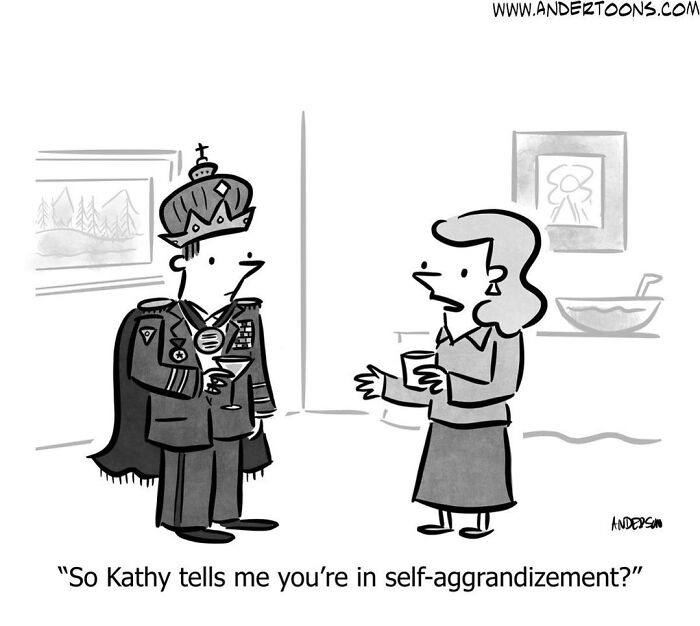
Image credits: andertoons
#41
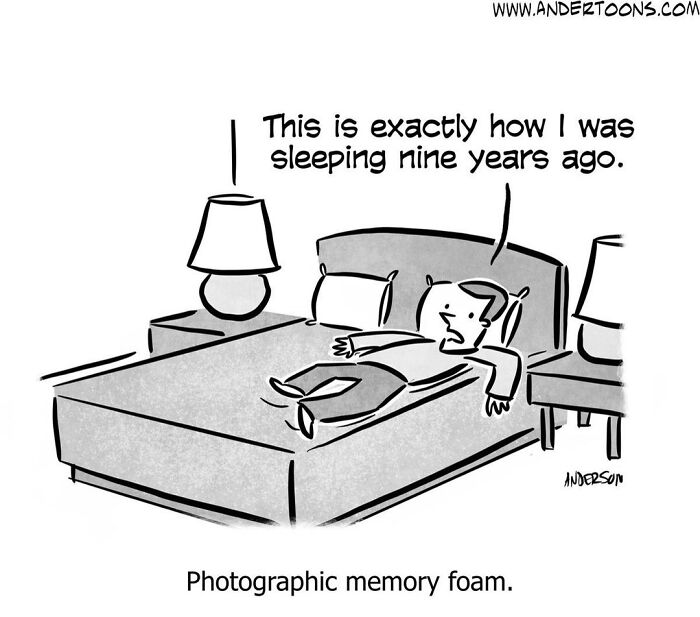
Image credits: andertoons
#42
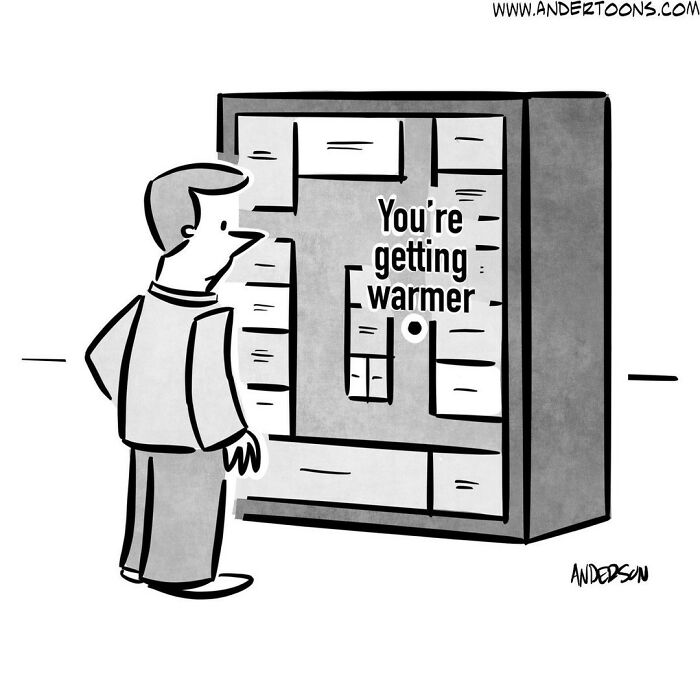
Image credits: andertoons
#43
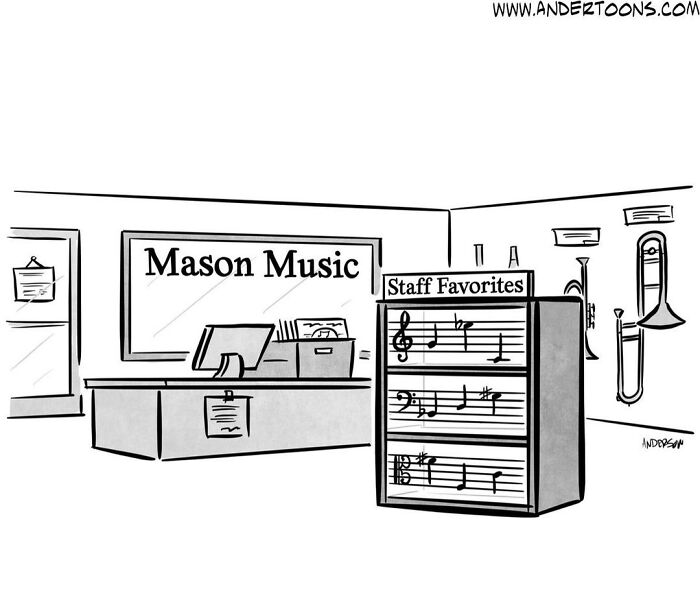
Image credits: andertoons
#44
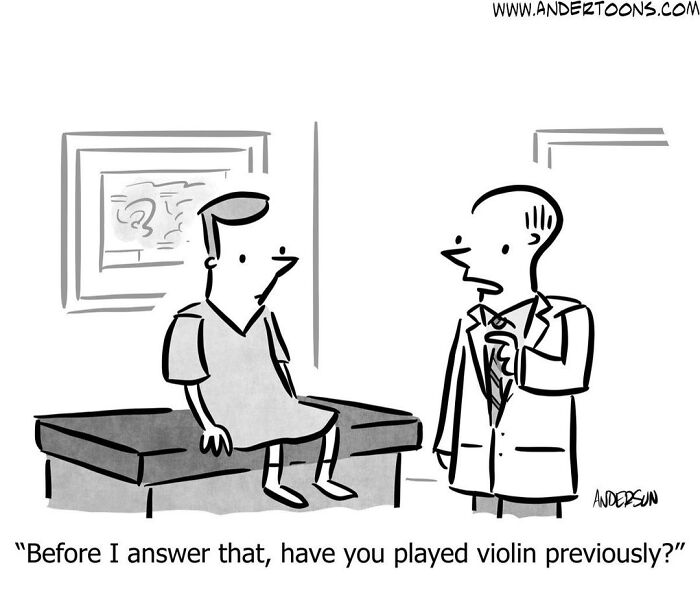
Image credits: andertoons
#45
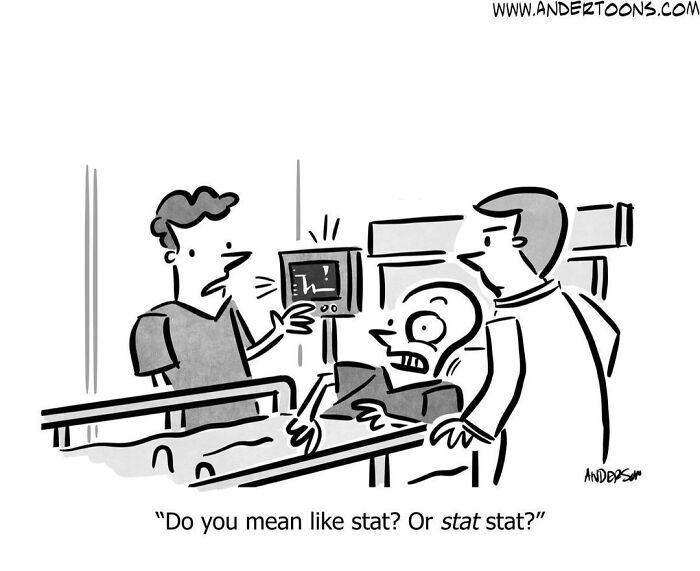
Image credits: andertoons
#46
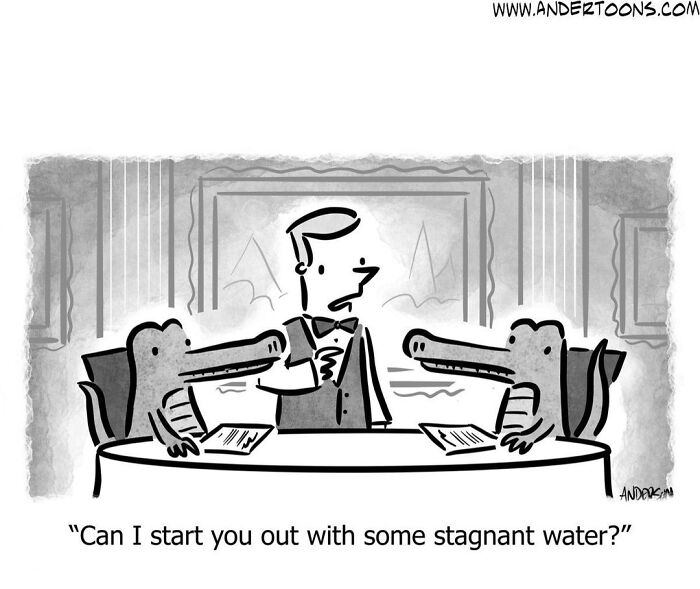
Image credits: andertoons
#47
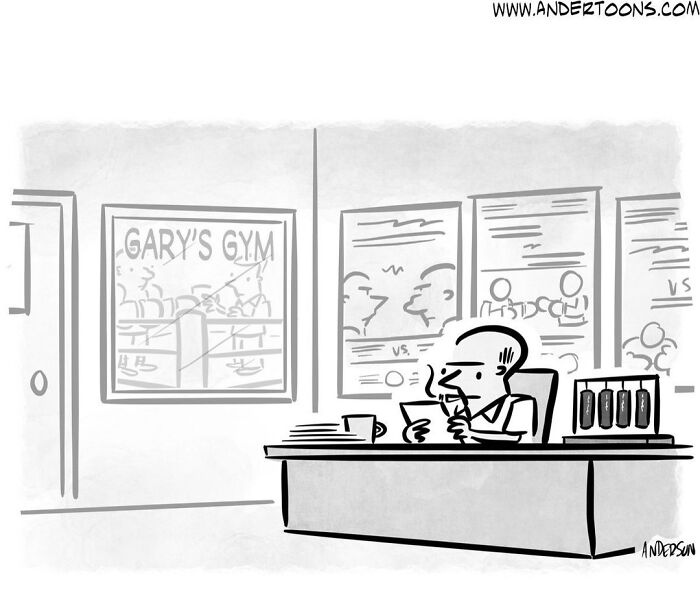
Image credits: andertoons
#48
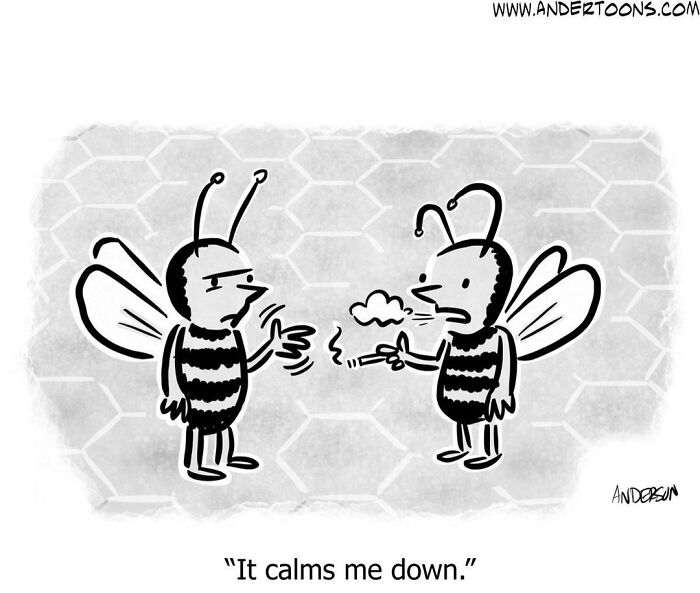
Image credits: andertoons
#49
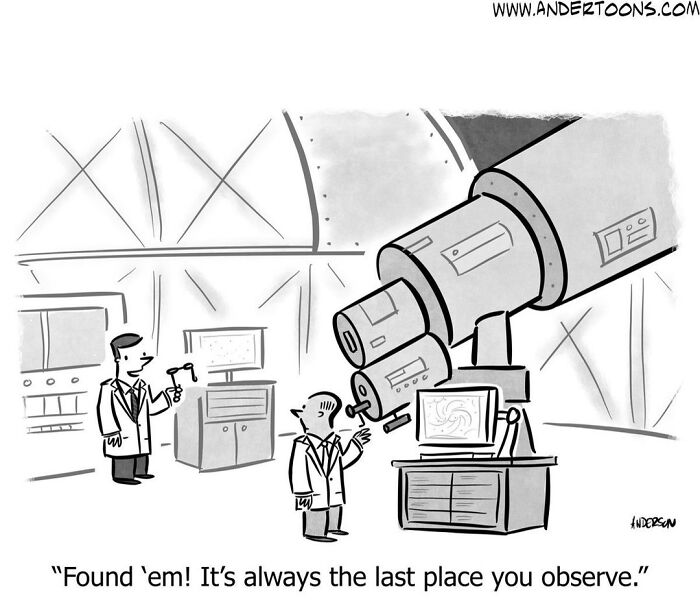
Image credits: andertoons
#50
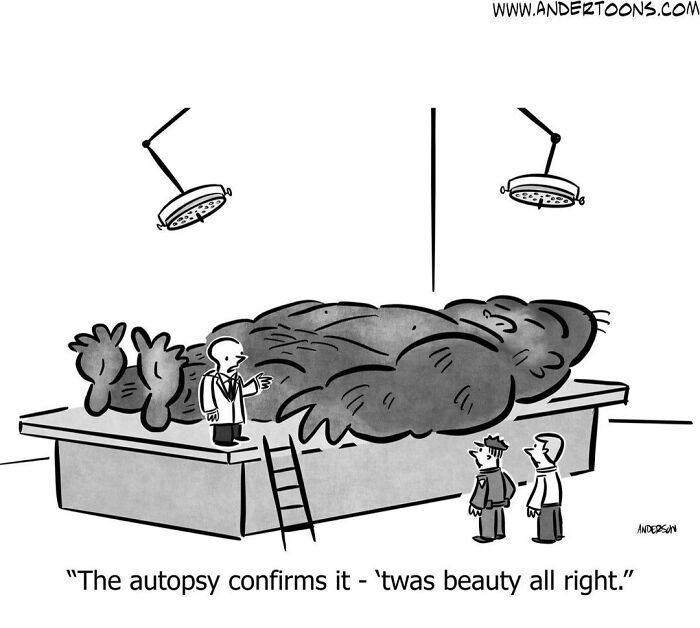
Image credits: andertoons
#51
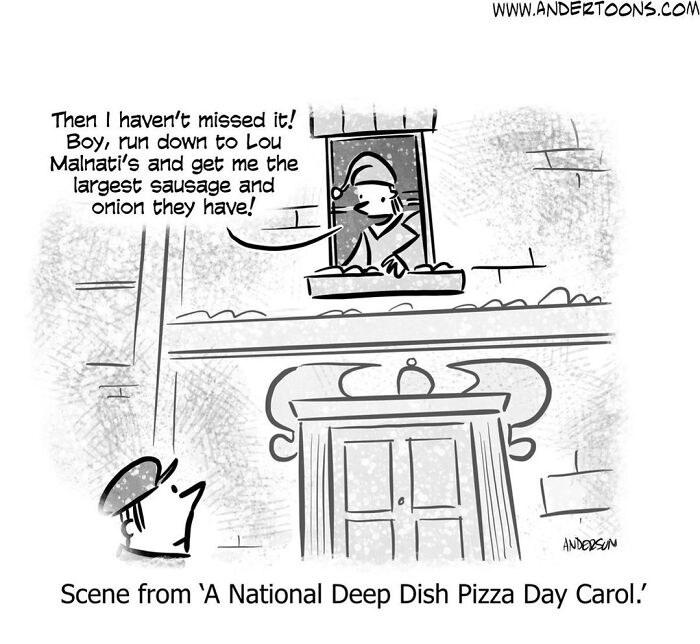
Image credits: andertoons
#52
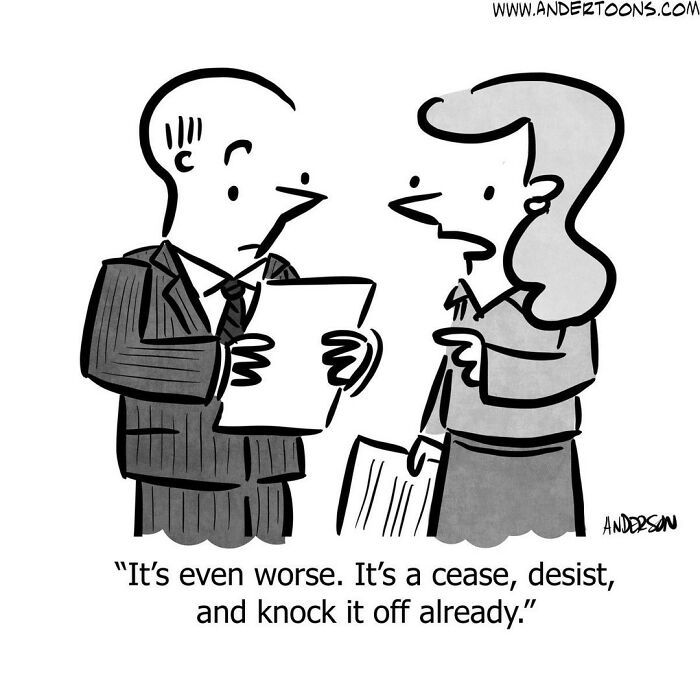
Image credits: andertoons
#53
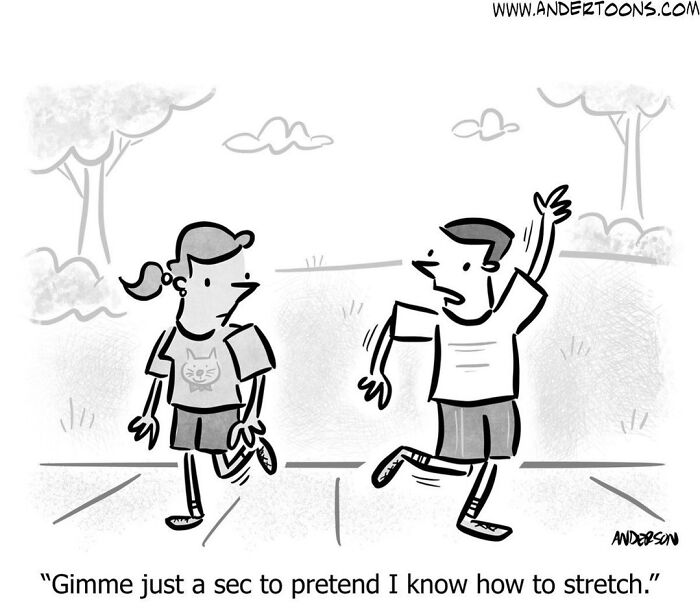
Image credits: andertoons
#54
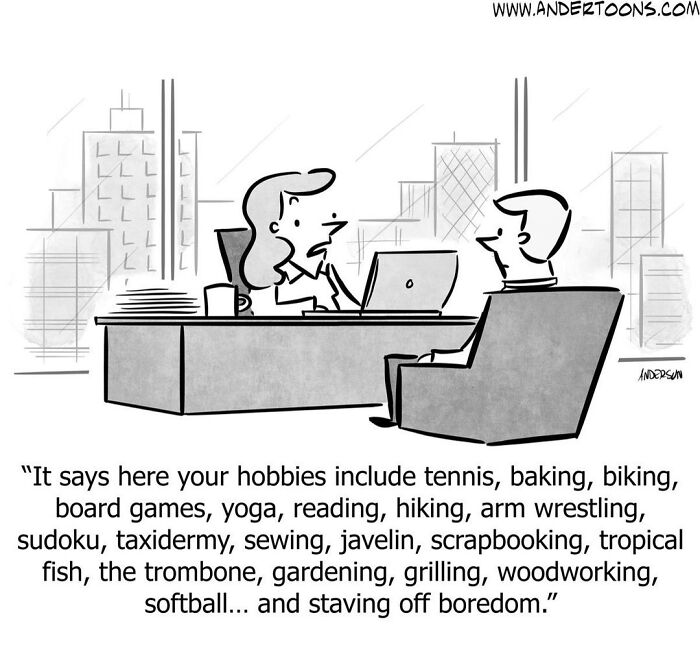
Image credits: andertoons
#55
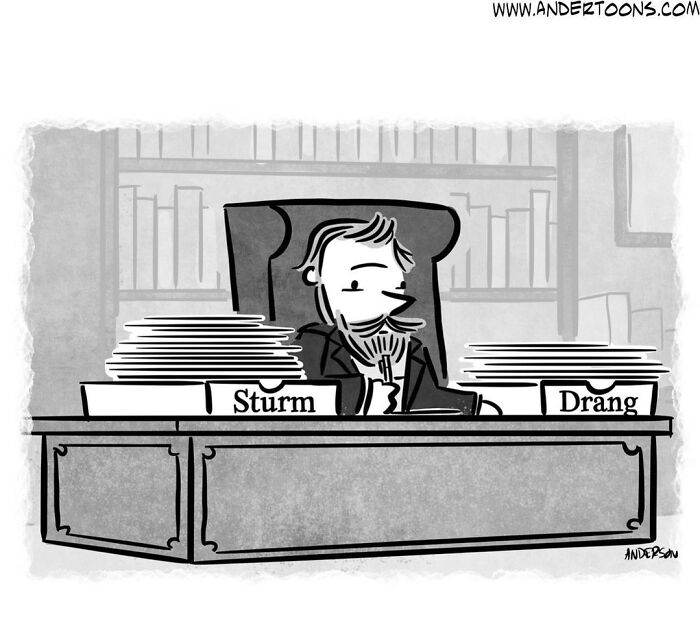
Image credits: andertoons
#56
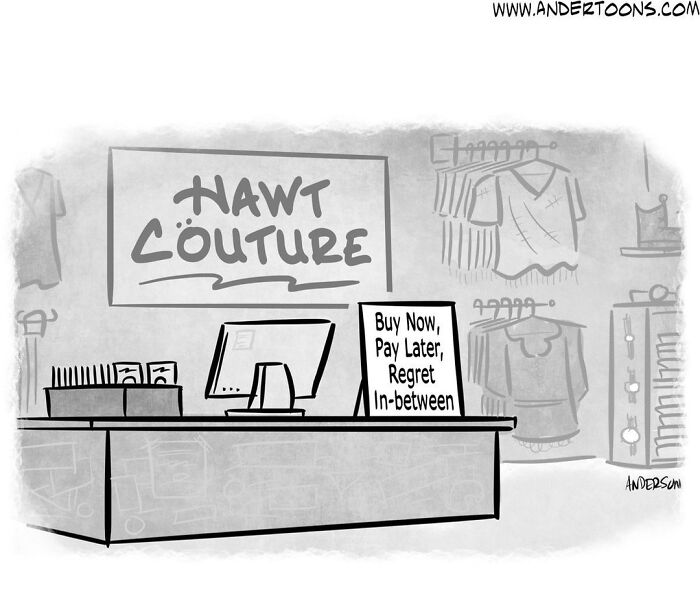
Image credits: andertoons
#57
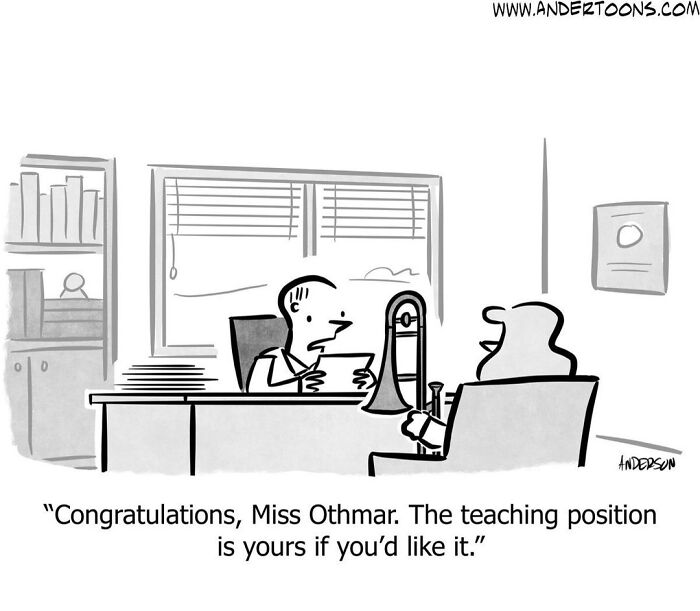
Image credits: andertoons
#58
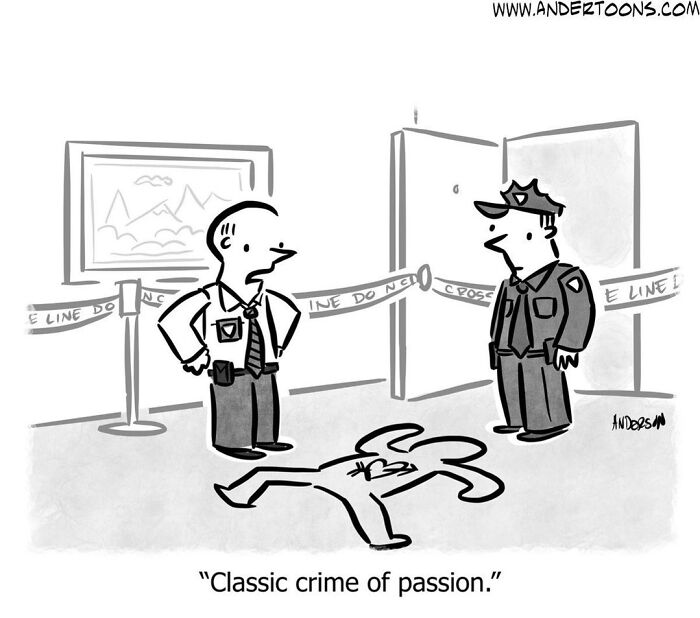
Image credits: andertoons
#59
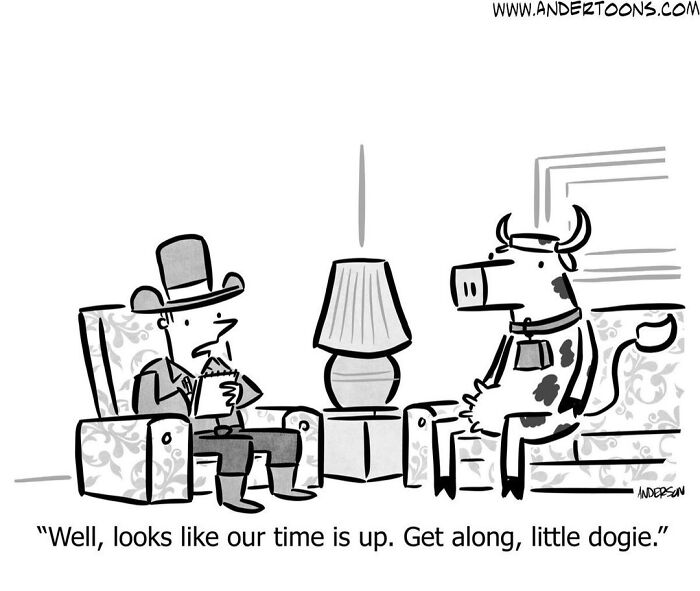
Image credits: andertoons
#60
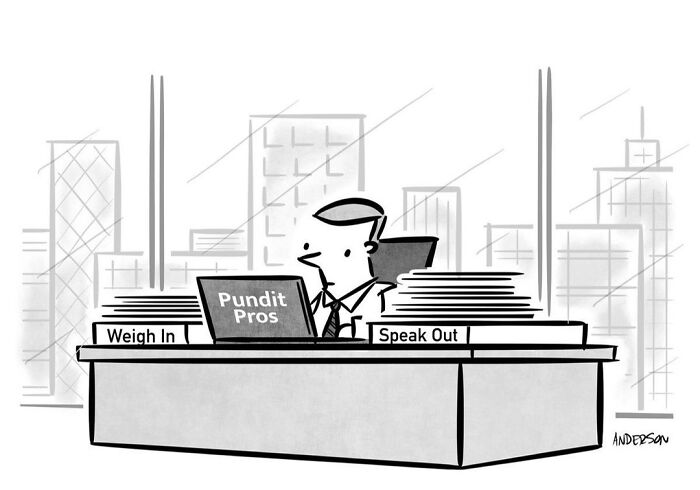
Image credits: andertoons
#61
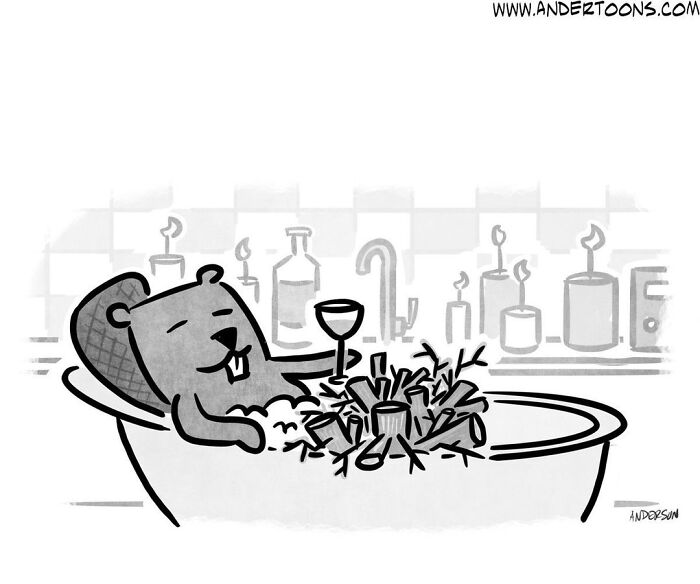
Image credits: andertoons
#62
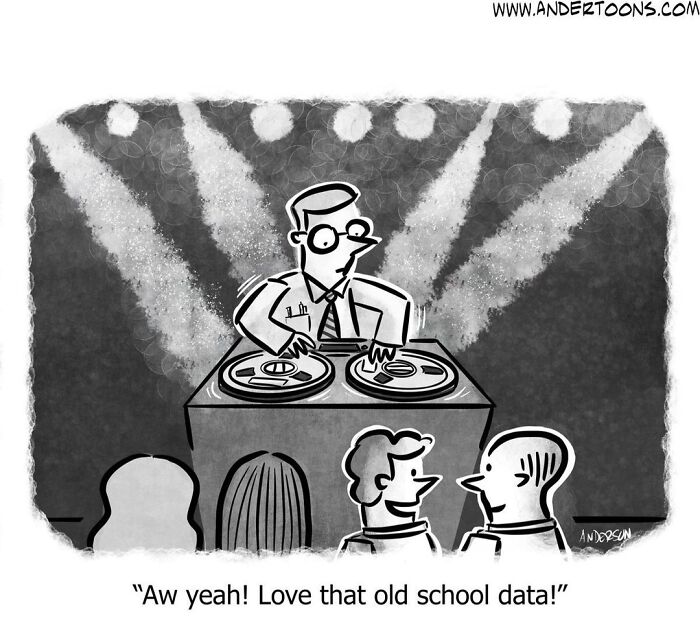
Image credits: andertoons
#63
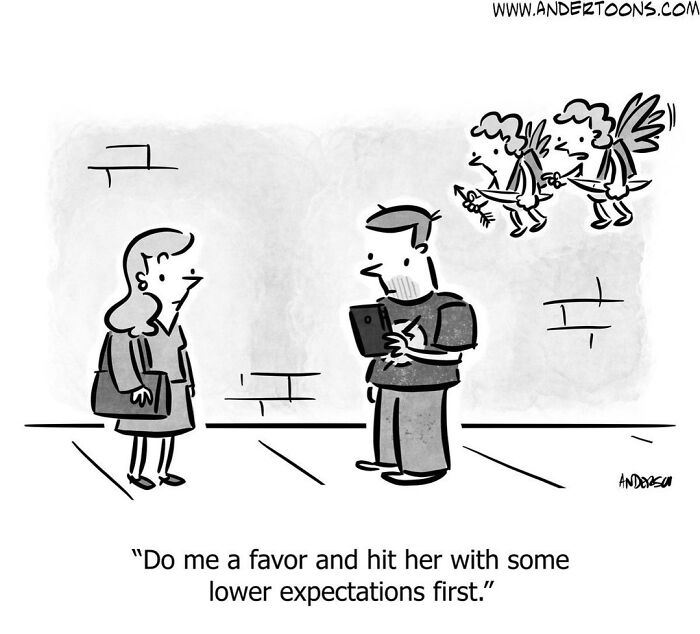
Image credits: andertoons
#64
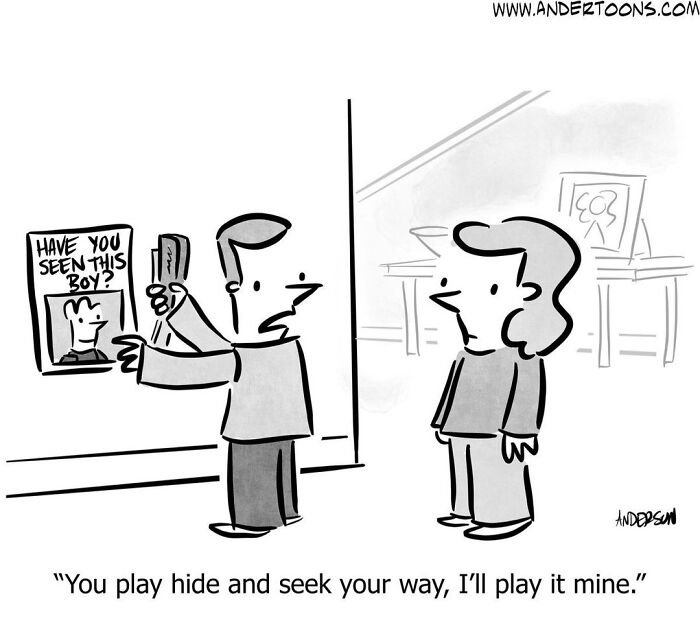
Image credits: andertoons
#65
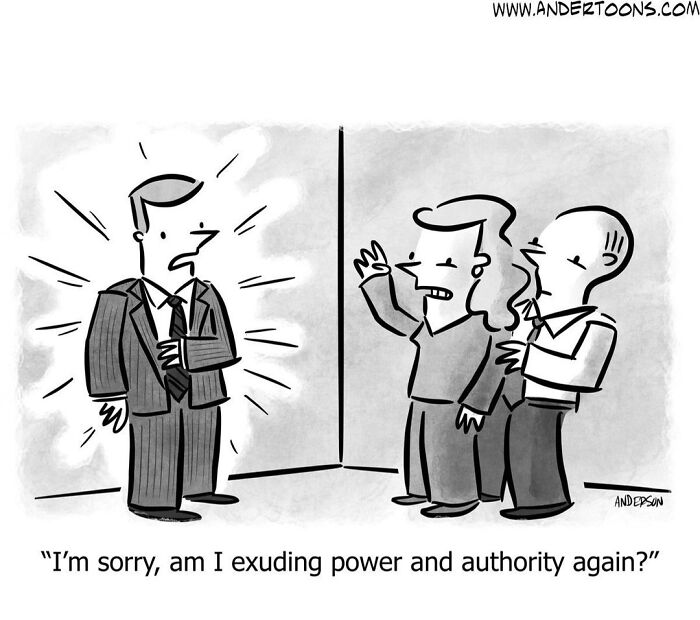
Image credits: andertoons
#66
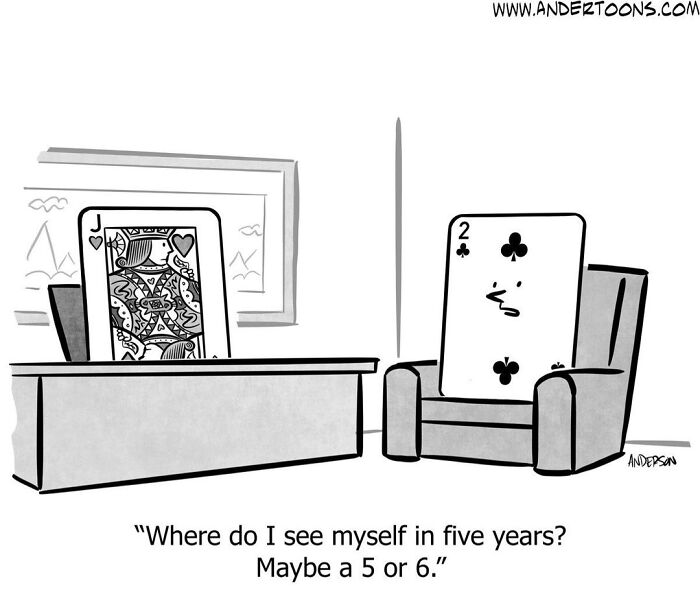
Image credits: andertoons
#67
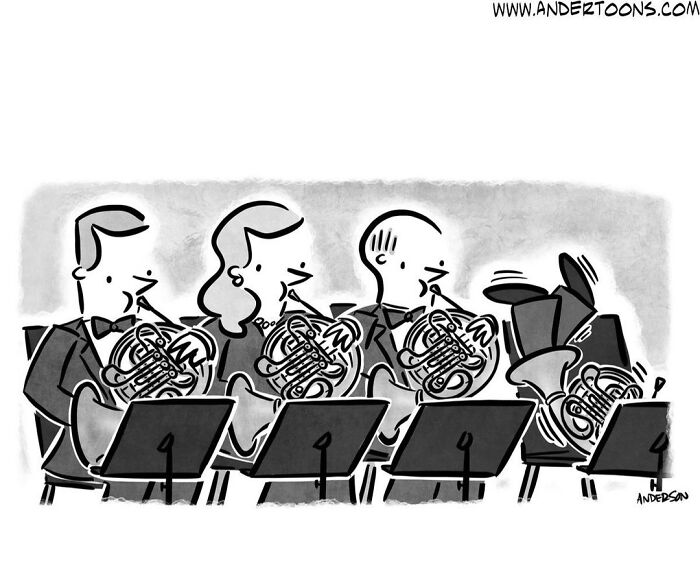
Image credits: andertoons
#68
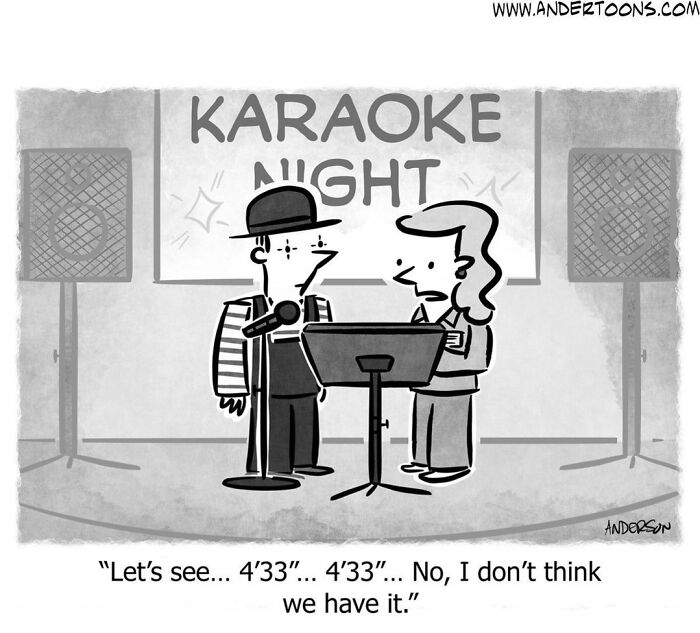
Image credits: andertoons
#69
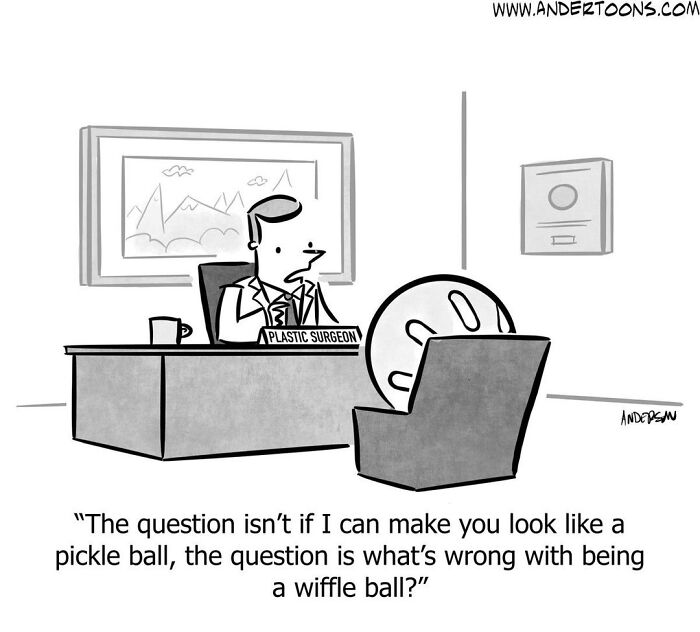
Image credits: andertoons
#70
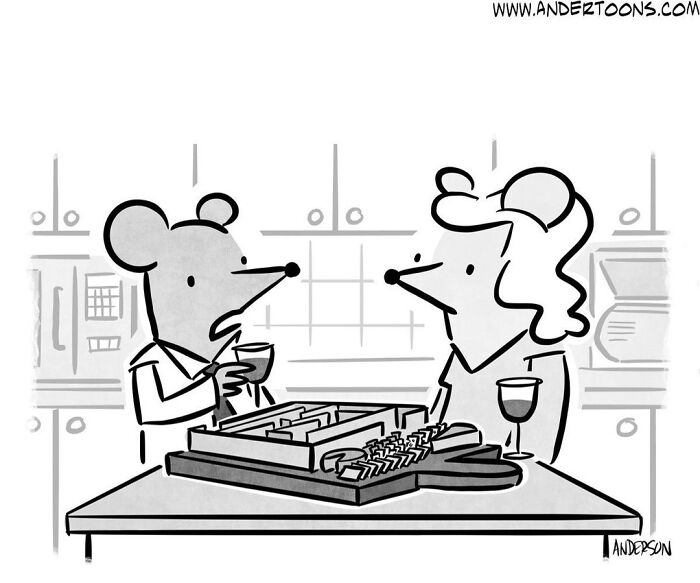
Image credits: andertoons






